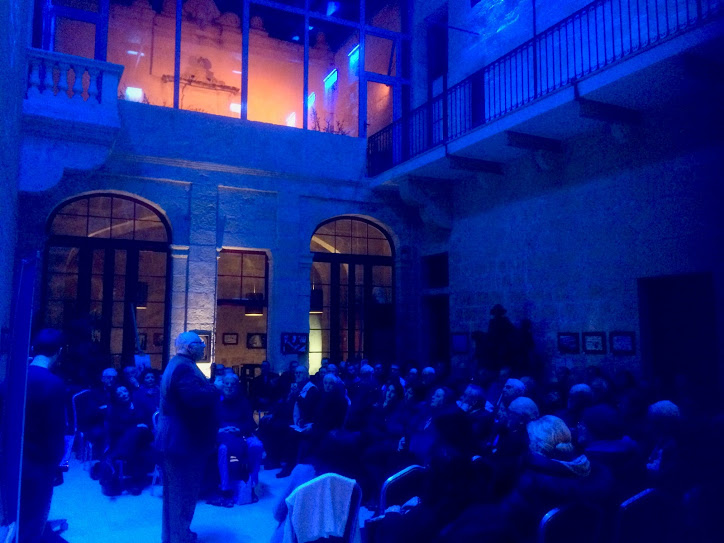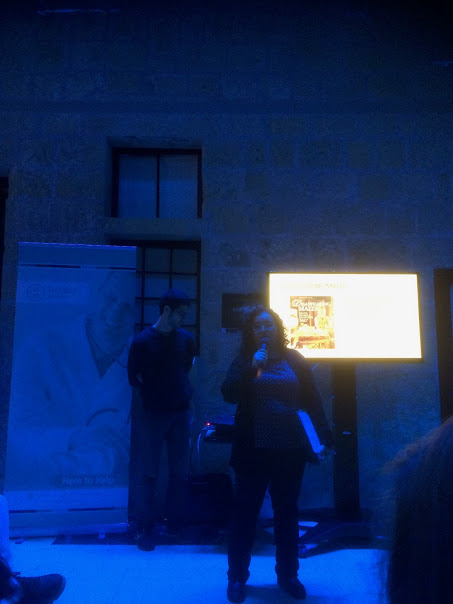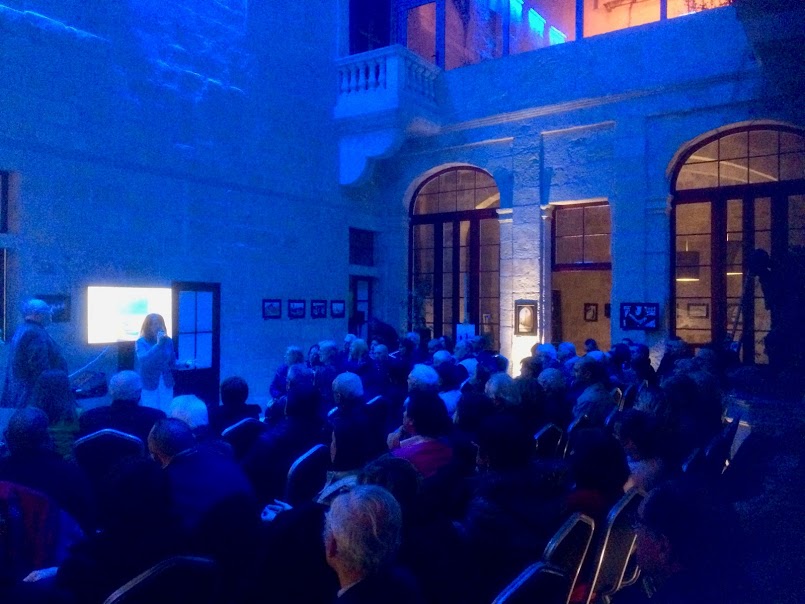The Boats of Malta – And The Fishermen Too
Start Date & Time: 09/02/2017 - 12:00 am
End Date & Time: 09/02/2017 - 12:00 am
Words by Derek Moss. Pictures by Maura Marlow bar the above, credited to the Malta Society of Arts, our gracious hosts.
On Thursday 9th February, Prof. Anthony Aquilina of the University of Malta and Fiona Vella both gave fascinating and interesting talks on ‘The Boats of Malta’. Prof. Aquilina’s talk came thanks to the research of world-famous anthropologist Desmond Morris, who lived in Malta for six years in the 1970s when he sketched some 400 out of 700 traditional boats in Malta. Fiona Vella, who is the author of ‘Disappearing Malta’, a book on culture, crafts and traditional ways of life, related stories of some the boat builders and some of the fishermen associated with these traditional boats. Both talks mainly focused on the ‘firilla’ traditional boat. The event, organised by Flimkien għal Ambjent Aħjar, was held at Palazzo De La Salle in Valletta.
Prof. Anthony Aquilina talked about three types of colourfully decorated boats, namely the luzzu, firilla and kajjikk, mainly focusing on the firilla in comparison to the other two. The firilla was regarded as one of the earliest type of fishing boats, followed by the kajjikk and later the luzzu and was very popular amongst local fishermen by the end of the 19th century. Initially the firilla was used to ferry passengers around the sheltered harbours but later functioned as a fishing boat. Only a few firilla boats survive today (some preserved in the Malta Maritime Museum), whereas the traditional luzzu and kajjikk are still very popular amongst local fishermen and mainly found in the fishing village of Marsaxlokk.
The firilla was a smaller boat sitting lower in the water, but more elegant, than the luzzu. Also the firilla’s gangway was more protruding in the front compared to the luzzu. Whereas the luzzu was used to fish further out to sea, the firilla was used to fish closer to the shore. The firilla was an open double ended boat. The kajjikk differs from the other two by having a taller stand post which was more flashy, had a flat stern or square transom, and was also used to fish in coastal waters.
These traditional wooden boats were decorated with vibrant colours of which the dominant colours are reddish brown, orange, yellow, white, blue, green and black. Reddish brown or maroon was painted on the lower half of the boat and marked out the waterline. Individual colours showed the fisherman’s personality with different parts of the boat assigned different colours.
What identified the fishermen’s locality was the colour of the Mustaċċ. A red Mustaċċ would indicate the boat came from St Paul’s Bay. A lemon yellow Mustaċċ indicated it came from Msida or St Julians, whilst an ochre yellow would identify the boat as pertaining to the Marsaxlokk and Marsascala area. If the Mustaċċ was painted black, it would mean there had been a death in the family. The eye, found at the bow end of the boat, could also be found at the stern end. Apart from colours, decorations were also applied to the Mustaċċ, where the eye was dominant in just over 50% of the boats. Where the eye was not seen, other symbols were applied such as a rising sun, a Maltese cross, fishes, shooting stars, lions, etc. The boats’ gangway, often varnished or painted brown, could be heavily decorated or engraved, for example, with shells, birds, mermaids, flowers, etc. Boats were also given a name, which could be of a saint, a feminine title, an actor, a politician, or had an emblem such as a dove with an olive branch, a lamb with a flag which is a symbol of Christ, or an emblem such as a dragon. Striped yellow and red painted firilla boats, as well as kajjikk boats, were used to take part in the annual Regatta races introduced by the locals in the early 19th century in order to compete for a prize as part of the festivities of Our Lady of Victory (8th September) and to celebrate Freedom Day (31st March).
Fiona Vella had interviewed boat builders and fishermen and her talk related to stories of the traditional ways of life of some the wooden boat builders and some of the fishermen associated with these traditional boats. Fiona’s narratives were about the lives of boat builder Anton Cordina (il-Bażulli) from Victoria, Gozo, and fishermen Ġanni Xuereb (il-Pipi) from Xewkija, Gozo, Ġorġ Spiteri (tal-Purtieri) from Żebbuġ, Gozo, and Mikiel Vella from Birgu. Stories of these four men have been collected and documented in Fiona’s book ‘Disappearing Malta’.
Anton Cordina (known as il-Bażuli) was a wooden boat-builder and fisherman. Anton constructed his first boat at the age of 14. At the age of 68, he was still constructing traditional wooden boats which he was very much renowned for. Maltese and Gozitans constructed their boats differently. Maltese boats were more upright, whilst Gozitan boats were wider and with less embellishments. Although not a very religious person, Anton placed a small Christian cross on each boat, which was usually affixed to the stem post during construction of the boats. In use, wooden boats required a lot of maintenance. At retirement, Anton tried to save wooden boats but some of his boats were destroyed in return for compensation provided by the European Union to boat owners who chose to retire from the fishing industry. His one regret was that he had never had the opportunity to pass on his trade to someone else.
Ġanni Xuereb (known as il-Pipi) came from a family of fishermen. Ġanni designed traps for catching different types of fish, e.g. octopus, crabs, etc. His traps lay on the seabed. Ġanni’s nine sons also became fishermen, as well as learning and following the tradition of constructing fish traps.
Ġorġ Spiteri (tal-Purtieri) as a young boy used to get up early to accompany his father and two brothers on fishing trips. When older he followed his father’s trade, becoming a fisherman, catching and selling fish for years until he retired at sixty. Then, when he turned sixty, Ġorġ stopped working as a fisherman and has spent the last forty years making bamboo curtains.
Mikiel Vella, who was also a fisherman, related the time during WWII, when bombs fell off the Maltese coast, killing a lot of fish in the sea, which he would gather up by hand. He also learnt to make fishing nets. The fish he caught were sold by his wife in the streets.
In conclusion, the knowledge and skilled labour needed for building wooden boats in Malta and Gozo is fast disappearing and no longer being passed on to the younger generations who opt for less arduous professions. The few skilled wooden boat builders that remain are currently restricted to building racing boats with the Regatta Clubs.
This well attended event was sponsored by: Da Vinci Hospital, Attard Co, Dhalia Ltd, and Mizzi Motors.



